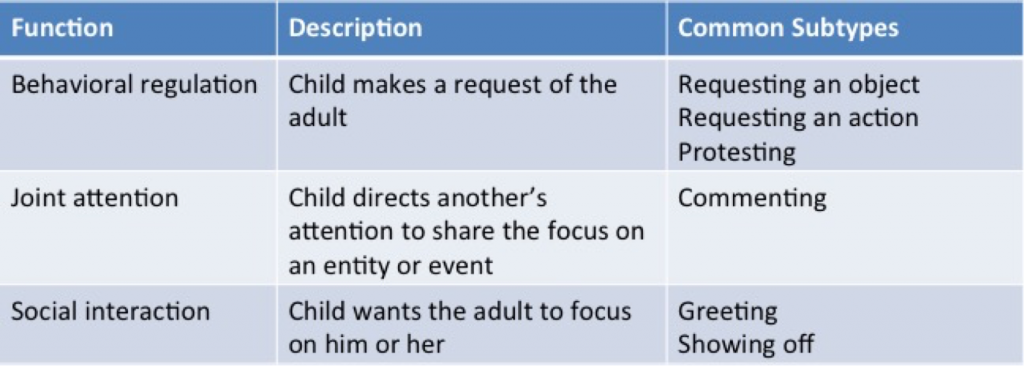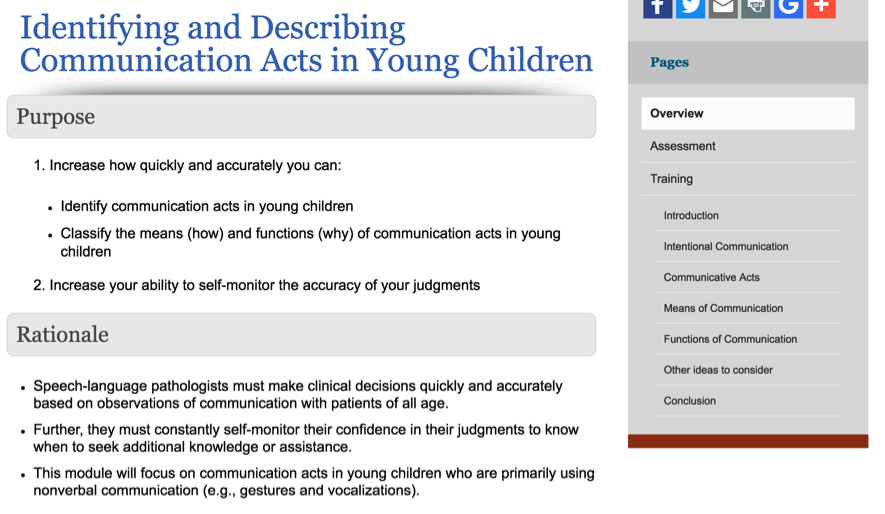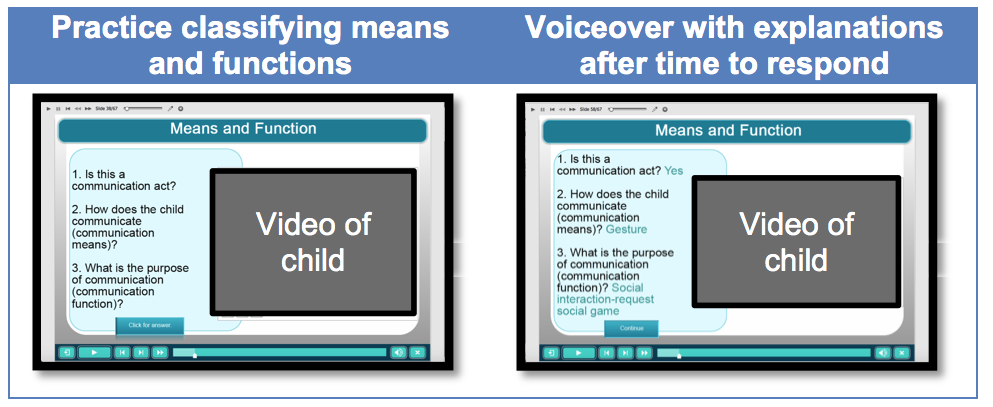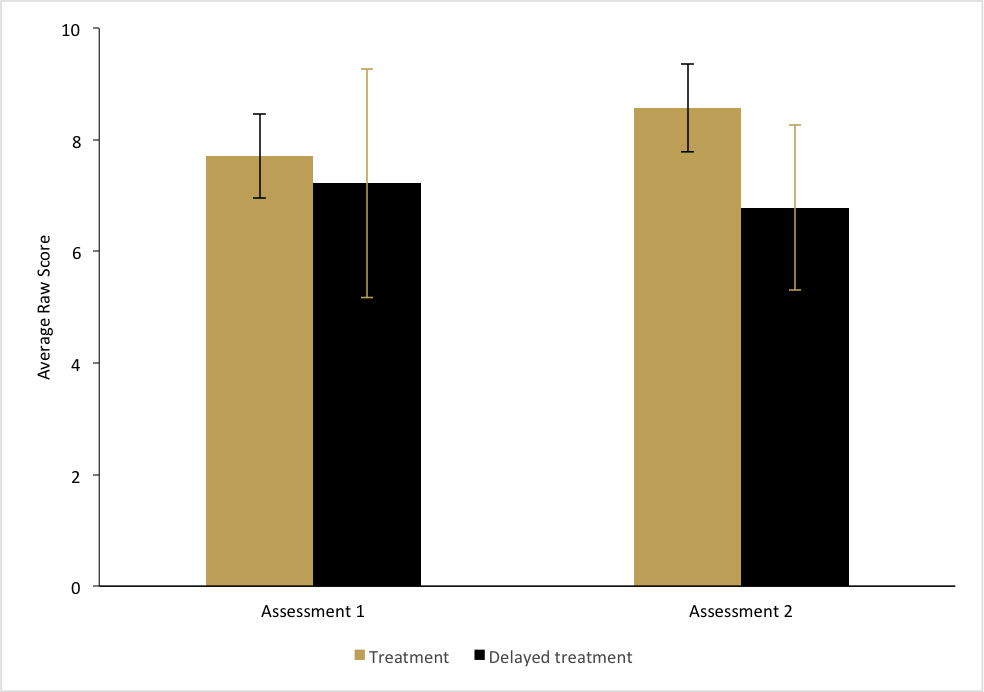Effect of an Online Training Module on Graduate Students’ Observational Skills of Communication in Young Children
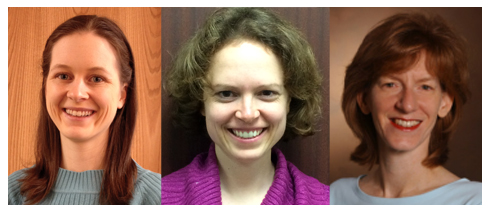
L to R: Jena McDaniel and Laurel Teller, Hearing & Speech Sciences,
working with Melanie C. Schuele, Associate Professor
of Hearing & Speech Sciences
Overview
Speech-language pathologists need to have quick and accurate observational skills to assess children’s communication abilities. This study investigates the effect of an online training module on the observational skills of graduate students in the Vanderbilt University Hearing and Speech Sciences Department. Currently, students in Child Language Acquisition and Child Language Impairments courses receive limited opportunities to observe communicative acts in infants and toddlers. Using the concept of blended instruction to address this problem, we developed an online training module about identifying and classifying communication acts in young children to supplement classroom instruction.
An intentional communication act occurs when a child directs communication to an adult using verbal, vocal and/or gestural means and waits for a response1-3. Communication acts can be classified by the means (what the child does) and function (purpose) as seen in the tables below.
Means of Communication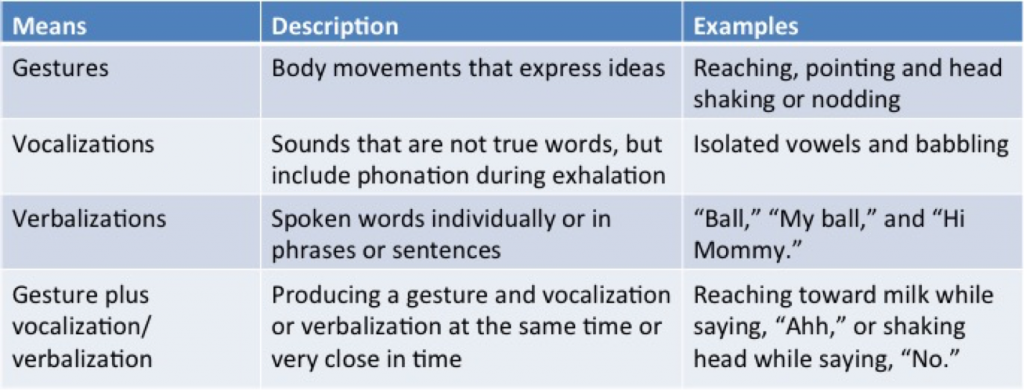
Functions of Communication
Research Questions
1) For graduate students in speech-language pathology, does completion of an online training module result in increased accuracy for the following in young children?
- Identifying communication acts
- Classifying communication means and functions
2) Do students maintain their level of accuracy for the following from post-training to several weeks later in the absence of additional training?
- Identifying communication acts
- Classifying communication means and functions
3) Does completion of an online training module result in an increased correlation between student confidence and expert scoring for identifying and classifying communication acts from pre-training to post-training?
Module Development
We created assessment and training modules using video recordings from eight, 8- to 22-month-old children. We combined clips from these video recordings with background information on a website.
Assessment Module Components
- Brief descriptions of intentional communication acts, means of communication acts and functions of communication acts on the website
- Interactive activity that collects student responses with the following types of items:
Training Module Components
We explained key concepts and scaffolded student learning using written text, videos and voiceover.
- Written description of intentional communication acts
- Interactive activity explaining how to identify communication acts
- Interactive activity explaining how to classify communication acts
Assessment the Module’s Effectiveness
Procedures. Seventeen incoming speech-language pathology master’s students completed the online modules the summer prior to entering the program. We randomly assigned students to treatment (n = 8) and delayed treatment (control; n = 9) groups. Students completed the assessment module three times and the training module once as shown in the table below.

During each assessment students watched 20 short video clips of a young child. For 10 video clips they identified the presence or absence of a communication act. For 10 other video clips students classified how (means) and why (function) the child communicated. After each item, students assessed their confidence in the accuracy of their response on a scale from 1 (very uncertain) to 6 (very confident).
Results. We compared the scores of each group on the assessment at Time 2 to determine module effectiveness for groups with and without training. The treatment group showed improved identification of communication acts (change in scores between Assessment 1 and Assessment 2) over the delayed treatment group (U = 11.5, n1 = 7, n2 = 9, p = .035), excluding one outlier (assumed technology malfunction). Figure 1 shows raw scores for each group at each time point.
Figure 1. Accuracy identifying communication acts on Assessment 1 and Assessment 2 for treatment and delayed treatment groups. Error bars are standard deviations.
Differences between the treatment and delayed treatment group were non-significant for change scores for classifying means, U = 30, n1 = 8, n2 = 9, p = .590, (Figure 2) and functions, U = 21, n1 = 8, n2 = 9, p = .158 (Figure 3). Effect sizes for change scores from Assessment 1 to Assessment 2 were large for identification (MT = 0.86, MDT = -0.44, Hedge’s g = 1.04) and function (MT = 1.50, MDT = 0.33, Hedge’s g = 0.75), but small for means (MT = -0.13, MDT = -0.44, Hedge’s g = 0.24).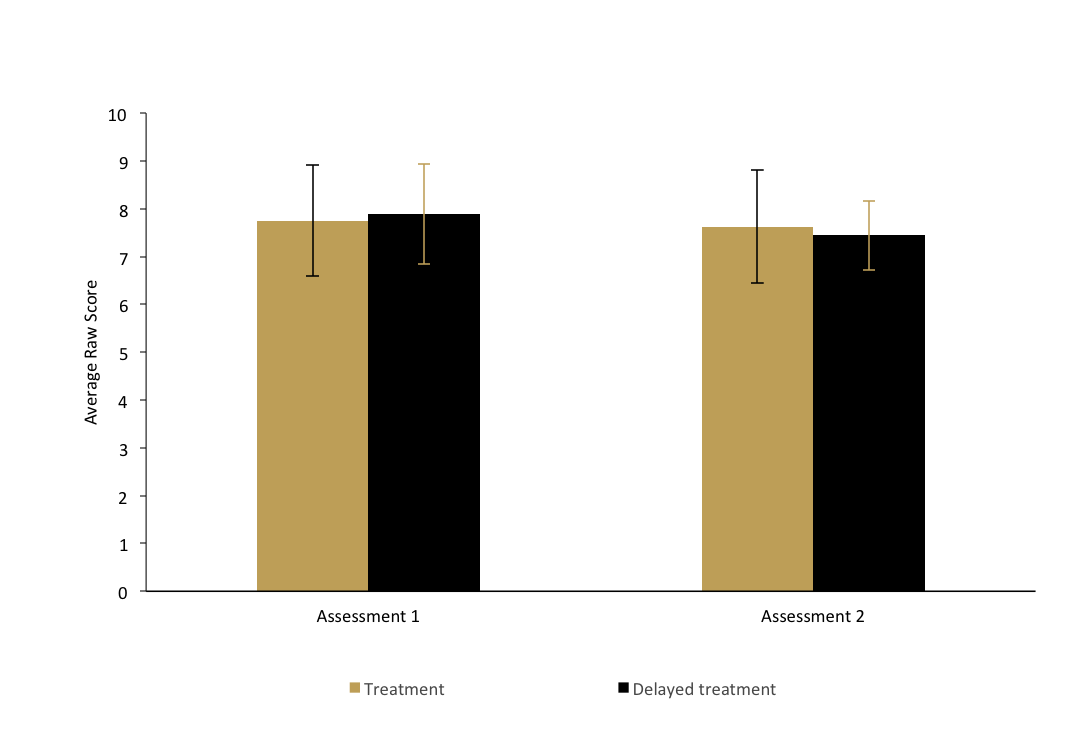 Figure 2. Accuracy classifying means of communication acts on Assessment 1 and Assessment 2 for treatment and delayed treatment groups. Error bars are standard deviations.
Figure 2. Accuracy classifying means of communication acts on Assessment 1 and Assessment 2 for treatment and delayed treatment groups. Error bars are standard deviations.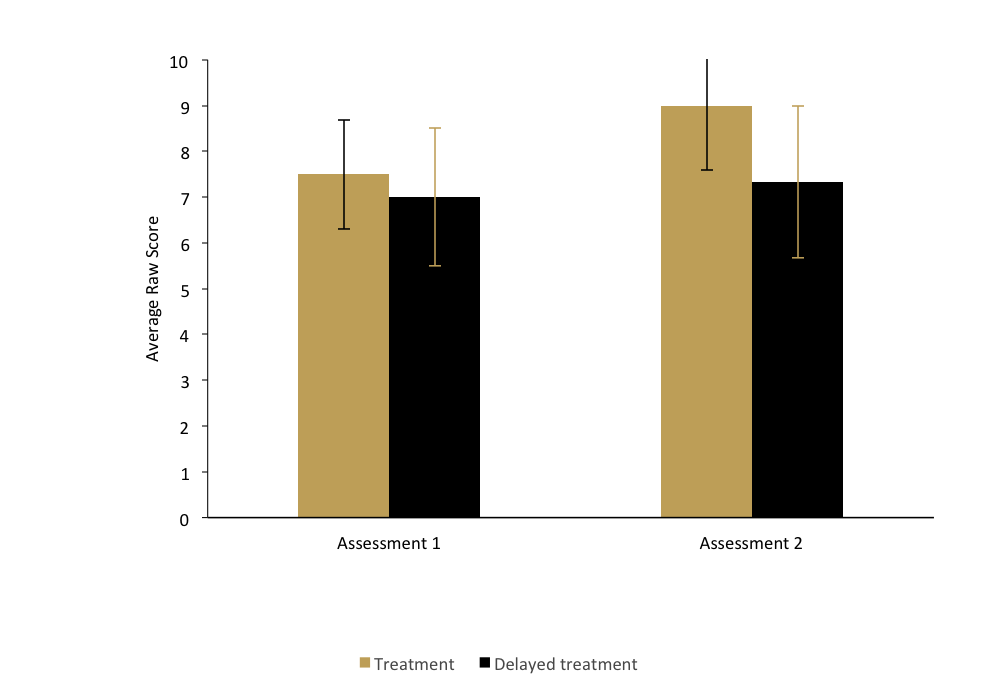
Figure 3. Accuracy classifying function of communication acts on Assessment 1 and Assessment 2 for treatment and delayed treatment groups. Error bars are standard deviations.
As shown in Figure 4, most students in the treatment group maintained their accuracy for identification (71% of students) and classification of means (75%) and functions (88%) after three weeks without instruction. Self-assessment scores did not differ across treatment and delayed treatment groups (ps>.20).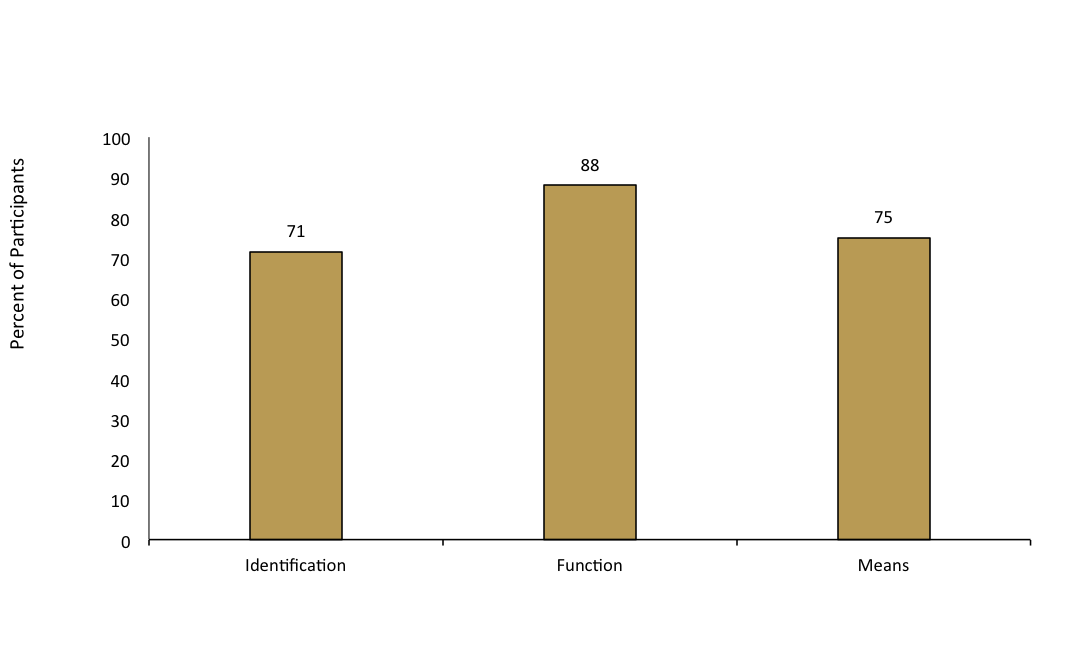
Figure 4. Percent of treatment group students maintaining performance at maintenance assessment. Maintenance is defined as scoring as high or higher on Assessment 3 than Assessment 2.
Discussion
Identification of communication acts improved following students’ completion of a targeted online instructional module. Although gains in classifying communication acts were not statistically significant in this small sample, findings warrant replication with a larger sample based on the effect sizes for classifying communication acts and functions and the observed ceiling effects across all skills. Students in other graduate programs, undergraduate students in communication sciences and disorders or related programs, or early childhood professionals may not exhibit ceiling effects and provide evidence of significant change between treatment and delayed treatment groups. Non-significant results for self-assessment items suggest that self-assessment scores on a 6-point scale may not be sensitive enough to demonstrate change on an item-by-item level. Results from this study inform use of online modules in communication sciences and disorders courses. Future directions include replicating the study with larger, more diverse samples, exploring other self-assessment measures, and incorporating real-time coding.
References
1Harding, C. (1984). Acting with intention: A framework for examining the development of the intention to communicate. In L. Feagans, C. Garvey, & R. Golinkoff (Eds.), The origins and growth of communication (pp. 123-135). Norwood, NJ: Ablex Publishing.
2Sugarman, S. (1984). The development of preverbal communication. In R. Schiefelbusch & J. Pickar (Ed.), The acquisition communicative competence (pp. 23-67). Baltimore: University Park Press.
3Wetherby, A. M., Cain, D. H., Yonclas, D. G., & Walker, V. G. (1988). Analysis of intentional communication of normal children from the prelinguistic to the multiword stage. Journal of Speech, Language, and Hearing Research, 31, 240-252. doi:10.1044/jshr.3102.240

